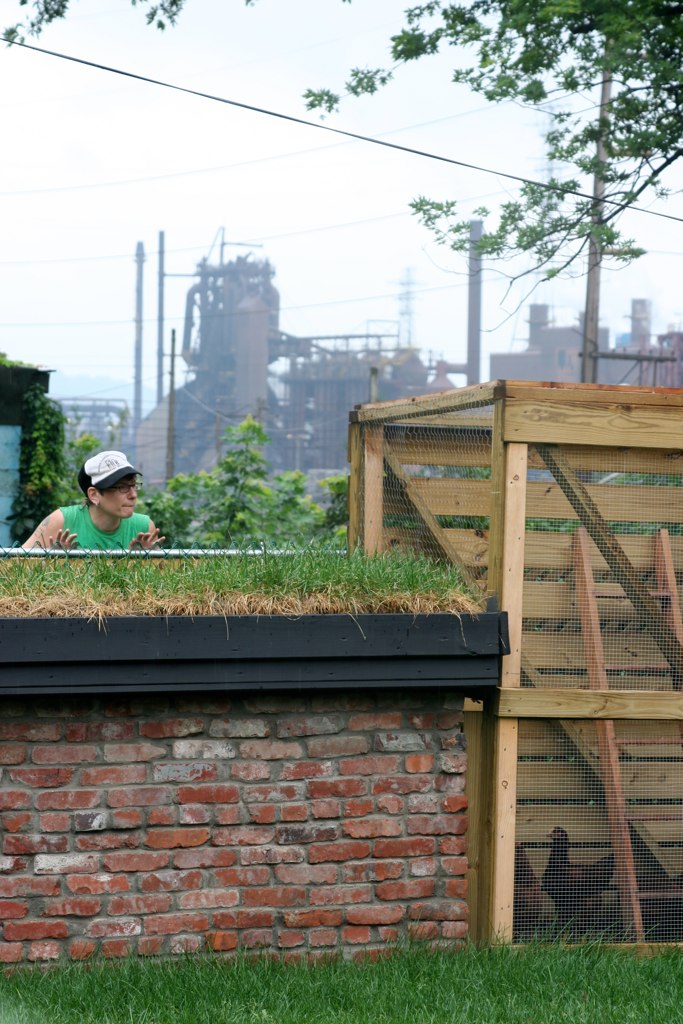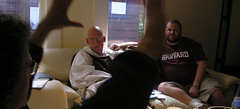Announcing: Rust Belt Tour Part 2

In a few weeks, I embark for Rust Belt Tour Part 2, camera in tow, looking for traces of how people's relationship with their territory is changing.
The Rust Belt has some of the highest rates of foreclosure, eviction, homelessness, and unemployment of any area of the nation. It's the perfect geographical region to study if you want to understand the social reality of the economic downturn.
A Modest Proposal
The thing that's changing right now isn't a new Russian Revolution or a new age of Utopias. It's just a subtle, historical shift in credit markets, migration patterns, and how-people-meet. Those things are worth knowing about and worth looking for.
In advance of the journey, we will look at maps of foreclosures, rates of debt, and new migration patterns. We'll be stopping off at shelters and places we could go where we'd find people in transit, i.e. truck stops, campgrounds, and the "jungles" where the homeless live.
What is the relationship between people and their territory in general? As we tour the Rust Belt, filming and interviewing, there are patterns that we can expect to encounter. Minorities are the most vulnerable to eviction, foreclosure, and migration. In the current crisis, minorities have lost structural control because of racist urban-planning policies inaugurated in midcentury America and continuing today under the guise of redevelopment (see my article, "The AntiDevelopment Crisis"
On the other side of these ghettos are zones of privilege, filled with murals, farmers' markets, and community gardens. Their isolation, however, means that community is but a facade for most of them. In our last tour we saw parades that no one attended, "community" gardens that fed but one family, and towns "revitalized" by artists where it was impossible to find food. The communities that self-isolate with capital/race/privilege are the least robust and interesting.
As we travel, we will be looking for territories where new forms of politics are being forged -- places that don't conform to the model described above. Throughout history, communities find each other in space. In nineteenth-century London and Paris and CHicago, radical politics emerged from public parks and urban cafes. We will ask, How is the relationship between people and their territory changing right now as a result of things more specific and structural than a local economic crisis? Our intuitions so far draw us to three conclusions.
First, the international evaporation of credit and the foreclosure crisis is pushing the poor out of Rust Belt cities at a higher rate than ever before. On our last trip, we learned from our friend Valdis Krebs how the international evaporation of credit was spiraling into the targeted eviction of folks in poor
neighborhoods, forcing out ethnic homeowners from the neighborhoods of Flint, Cleveland, and Philadelphia.
Second, the deindustrialization of North America is promoting a backwards-migration of radicals and artist elites to the places of abandonment. On our last trip, we saw in Braddock how deindustrialization was driving a new
back-to-the-land movement of rich elites. We learned about how deindustrialized towns save themselves by recruiting prisons. We read in the NYT, about the wealth of abandoned property in the Rust Belt, and how back-to-the-land punk squatters in Buffalo are changing land law to protect squatters' rights.
Third, the internet is promoting the creation of new communities.
c) changes in how-people-meet - historically, newspapers, maps, and guidebooks changed who-talked-to-whom, not necessarily making everyone talk, but opening up certain places where only the rich or only radicals met.
Are there internet places where elites are meeting and then changing the rust belt? are there internet places where radicals are meeting and then hooking up in real life?
We will scour sites such as http://www.kickstarter.com/, where nonprofits raise funds for new community gardens, and http://www.pledgebank.com/ for evidence of new meeting patterns. -- which has more interface with homeless shelters and soup kitchens.
Social networking among nonprofits seems to be genuinely changing the shape of engagement in America. For instance, community-based funding seems to be saving local agriculture in San Francisco.
However, web-based charity may mean a lot less in places of economic isolation like the Rust Belt. A preliminary survey of these sites suggests that the majority of users are privileged users-of-technology, meeting up for the purposes of painting murals or planting community gardens: in short, they're gentrifying the poor out of neighborhoods. The nonprofits receiving funding on Kickstarter have raised funds for community gardens and murals, but not for rehousing the homeless or creating soup kitchens.
We're interested in finding any users who aren't local garden leagues -- perhaps punk
squatters who found out about their squat via the internet, or users of http://www.couchsurfing.org/ in more diverse areas of rust belt cities.
In a few weeks, we'll be reporting back. Till then, check out the photos from Rust Belt Tour '09 and reports from our travels last year.
Labels: rust belt; landscape; foreclosure; gentrification; migration










3 Comments:
One other theme to investigate is a broad-based or city-to-city picture of migration due to both the long-term loss of industrial jobs and the recent additional loss of housing due to the foreclosure crisis.
Where do workers go to find jobs and how do they find this information? What are the networks by which this information travels?
Conversely, we witnessed an influx of young artists, culture-makers, gardeners and punk travelers into these Rust Belt towns. How did these travelers know where the opportunities lay? What are the networks by which this information travels?
Again, to shout it out, we're looking to talk to...
- community organizers working with displaced populations within Rust Belt cities
- workers using formal and informal networks to find work in new cities
- artists/gardeners/culturejammers using the internet and/or other networks to find opportunities and support for projects in Rust Belt cities
- you!
Pittsburgh
Braddock
Youngstown
Cleveland
Columbus
Akron
Toledo
South Bend
Ft. Wayne
Muncie
Flint
Detroit
and more!
Would you like some update and inputs from rural Armenia, whose industrial economy collapsed with the Soviet Union, and whose physical infrastructure was hit with a devastating Earthquake in 1988?
Sam, maybe but probably not this trip. You can leave a link here though.
Post a Comment
<< Home